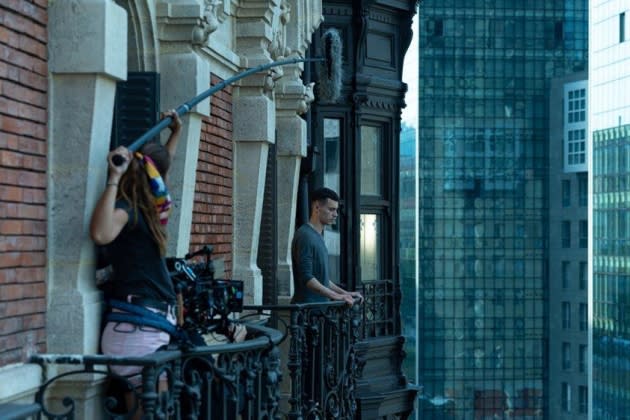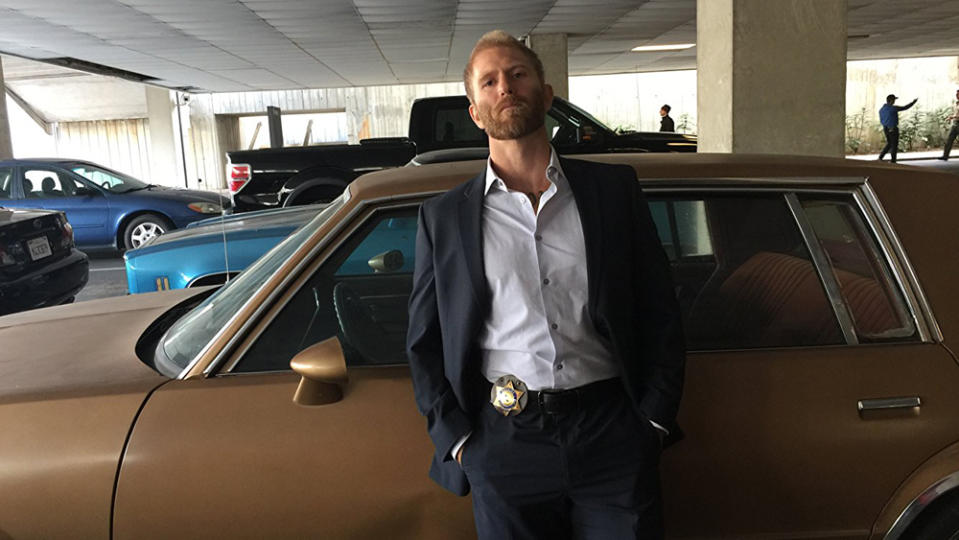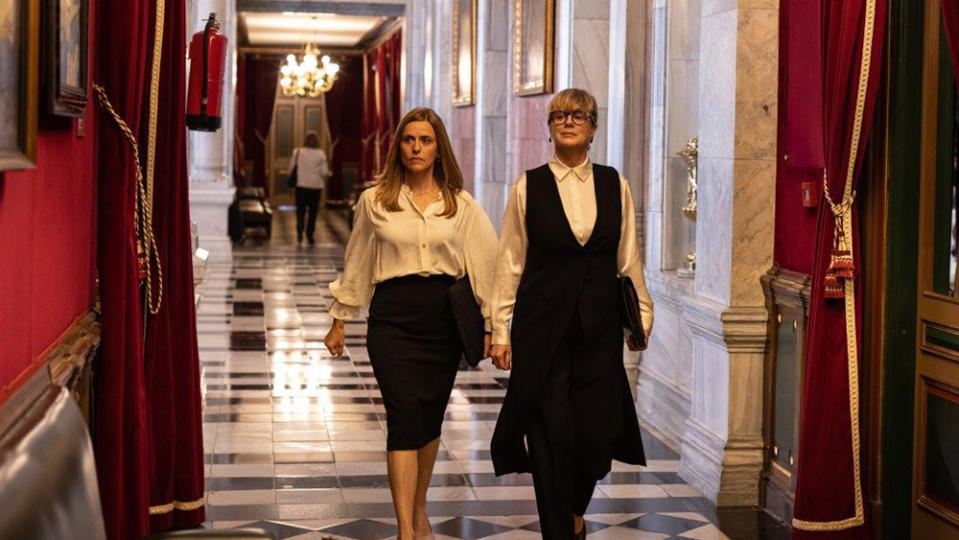Spain’s Shoot Scene Sees Incentives’ Effect as Ever Greater Demands Are Made on Film Commissions

Money talks. On Jan.1, Bizkaia, the Basque Country province, introduced new tax breaks with one of – if not the – highest deduction rate in the world: up to 70%. No other rate registered in Olsberg-SPI’s Global Incentives Index 2023 reaches such heights.
Also on Jan. 1, mainland Spain raised rebate caps on TV dramas to €10 million ($10.9 million) per episode, which climbs to €18 million ($19.6 million) per episode in the Canary Islands.
More from Variety
Very few territories in the world can hold a candle to this relief. Introduced in 2015, and raised in 2016 and 2020, Spain’s mainland rates come in at 30% for a first €1 million spend, 25% afterwards. Even so, tax break deductions for film, TV and live entertainment for the whole of Spain rose from €19.5 million ($21.3 million) in 2019 to an estimated €153 million ($166.8 million) for 2022, Natalia Jaquotot Garre, a deputy director general at Spain’s Treasury, said at a Spain AVS Hub panel in March’s Málaga Festival.
At Conecta Fiction, the TV co-production and networking forum held last week in Spain’s Toledo, further indication of incentives’ impact was served by a panels, Spain: A Unique and Profitable Location, backed by the Spain Film Commission.
The incentive super-charge comes as multiple factors are morphing the international shoot scene, which looks set to to become not just a battle of incentives – and depth of first-class talent pool, locations and studio infrastructures – as territories face off ever more over the quality of film commissions themselves.
In the Canary Islands, the number of film shoots has risen, from 122 in 2019 to 155 in 2021 – after a COVID-19 drop in 2020 to 80 – and 164 in 2022. The real revolution is in spend, however: €48 million ($52.3 million) in 2019, €98 million ($106.8 million) in 2021 and an all-time record of €224 million ($244.2 million) last year, Lorena Martín at Canary Islands Film, told Variety.
“We don’t have hard numbers as yet. Seeing the activity that we’ve had in the first half of the year, however, and shoots which are in production or confirmed for the second half, it looks like we’ll smash records again,” she added.
Among first half shoots, “Den of Thieves 2: Pantera” has lensed in Tenerife, two U.S. blockbusters, one a series another a movie, have shot in the Canary archipelago.
Further shoots take in doc-series “Nuestro Universo,” produced by Silverback Films for the BBC and aired on Netflix, and Buendía Estudios’ “Marbella” for Movistar Plus+.
As Conecta Fiction kicked off, Buendía Estudios Vizcaya confirmed that it will shoot this fall in Bilbao “Angela,” a Spanish reversion of “Angela Black” produced with the participation of Atresmedia TV which marks BEV’s first Bizkaia shoot after it established its production house there earlier this year.
Also in Bizkaia, the Basque Country province stretching south from capital Bilbao, produced by Basque Films, Galder Gaztelu-Urrutia went into production in May on fantasy horror allegory “The Platform” 2, his follow-up to the second most popular non-English film ever on Netflix.
Feel-good comedy “El Bus de la Vida,” directed by “The Beasts” producer Ibon Cormenzana, and “Anatema,” part of the Alex de la Iglesia/Sony/Amazon horror label Fear Collection, feature among further Bizkaia first-half shoots.
Others are Pablo Hernando’s fantasy crime thriller “A Whale,”:Andrea Jaurrieta’s “Nina” from Bteam, Icónica, Irusoin and Lasai; and dystopian sci-fi drama “The Other Side,” Season 2 from Daniel Ecija’s Good Mood (“I’m Alive”).
“We’ve noted the incentive. The volume of shoots has gone up. Second half prospects look very good indeed and 2024 even better,” Agustín Atxa, film commissioner at the Bilbao-Bizkaia Film Commission, said at the Conecta Fiction panel.
“There’s been an increase in shoots from when we launched in June 2017 to now. We’ve seen 53 shoots, from TV series to entertainment and realities. The volume’s gone up and we’re still seeing an increase in permits, and use of locations,” says Mike Villanueva, Film Commissioner at Castilla-La Mancha Film Commission, whose capital is Toledo. Entertainment TV shoots have gone up 35%, he added.
Attracted by its epic locations and huge historical patrimony, big U.S. movies originally shot in Spain to reinvest Du Pont frozen funds due to blocked currency dealing (Samuel Bronston) or because of low costs (“Laurence of Arabia”).

As Spain grew its talent base of world-class technicians – an SFC sizzle reel shown at Conecta Fiction reproduced the extraordinary tsunami scene in J.A. Bayona’s “The Impossible,” the crowning achievement of Alicante’s La Ciudad de la Luz – Spain could offer a trifecture of locations-costs-talent.
Incentives and “Game of Thrones” brought it this decade onto the big shoot radar.
Conecta Fiction highlighted however, newer priorities. A set of sessions presented best case practices in sustainability. At Cannes the SFC showcased a new generation of Spanish studio facilities as shoots travel less, spending more for more time at less bases.
As Hollywood studios and global streaming services seek more bang for their buck, an SFC Virtual Potential panel focused on high-tech cost reduction. At it, for example, Adrian Pueyo, at Spain’s Orca Studios, suggested that VFX and LED technology should be seen as a further tool on occasions to control production costs.
“VFX and LED volume technology are a new opportunity,” said Pueyo whose Orca Studios delivered VFX work on “The Witcher” Season 3. “But they aren’t a panacea. However, if you have the adequate light allowed by the system and the focus, cost reductions with LED can be very high indeed,” he added.
Countries also look set to be judged ever more according to the quality of their film commissions. Several factors are in play. As the number and muscle of shoot incentives continues to rise – the number of automatic incentives around the world increased from 86 in 2017 to 111 in 2023, May’s Global Incentives Index 2023 notes – more, not less than shoots look likely to take place outside their producers’ home country, increasing their dependence on the local knowledge base of commissions.
Shoots’ ambitions have risen, with more filming at more locations. Before a film used to shoot for five-to-seven weeks at three-to-five locations, sometimes less. Now there are series which shoot for four months, using two units and a total of 80 locations,” said Atxa.
As two of the highest-profile titles introduced to buyers at Conecta Fiction – Fremantle’s “Negotiator,” Filmax’s “Dating in Barcelona” – series are pushing ever more local elements, as an appeal for both domestic and international viewers.
Before, Almeria would be passed off as part of the Wild West. Now, locations are more often identifiable, and protagonists of titles,” said Atxa, citing Netflix No. 1 global hit last year “Intimacy,” shot in Bilbao and environs, and “Muted,” shot between Bizkaia and Madrid. “Now your value is who you are, with your local identity and knit through by a sense of international vision,” he added, citing Berlin winner “20,000 Species of Bees.”
All of which makes exorbitantly larger demands on film commissions than just a decade ago. “The increase in audiovisual productions, the emergence of new formats, digital transformation, and the competitiveness between countries and territories make it necessary to strengthen and professionalize even more the role of film commissions,” Atxa argued.

Best of Variety
Sign up for Variety’s Newsletter. For the latest news, follow us on Facebook, Twitter, and Instagram.

